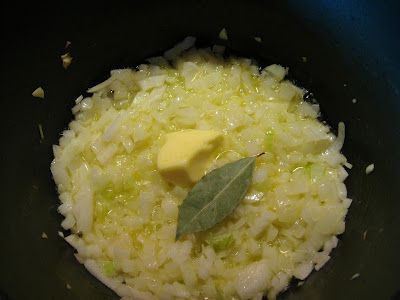What is it actually that makes mulled wine, and especially his fiery cousin, the 'Feuerzangenbowle', a preferred metaphor for reminiscing?
Is it the fact that it is closely associated with dark winter evenings and miserable weather, when there is nothing else to do then think of better times gone by? (Like, summer, for example?)
Or is it that mulled wine can pack quite a punch and get you talking incoherently much faster than many other drinks?
Surely the eponymous German movie from 1944 helped a lot in cementing the reputation.
But for me, mulled wine so far only evokes memories of burned gums and icy feet, of cheap sweet wine, either overcooked and flat or stunningly cloying with destilled cinnamon.
A few years ago, a colleague of mine who lived in one of Germany's wine regions told me how they made their mulled wine: instead of simmering the wine with spices and citrus peel, they prepared a sirup in advance, and only spiced the wine as it was warmed.
Of course, I tried it out, but the results were only marginally better than what I could buy in a shop. The aromes were somewhat flat, and there just wasn't any chance to strike a balance between the citrussy and spicy flavours.
So I abandoned that project.
But, as these stories go, a few weeks ago another dear colleague of mine got us talking about said 'Feuerzangenbowle'. And somehow, the rum traditionally used to set the sugar-loaf alight turned into the missing link and sparked a whole bunch of quite delightful experiments in my kitchen.
Making a dish and composing a perfume isn't all that different in my eyes. It is about harmony, complexity, and head, heart and base notes, however you might call them.
To keep with the perfume image, it was the head notes I had been missing in the usual mulled wine. Macerating the spices in the cold rum instead of boiling them for a prolonged time preserved much, much more of the more volatile essential oils, and the resulting drink is astonishingly fragrant and the taste much more complex.
Also, the ingredients gives off their flavours into the rum after a different amount of time. So you get the citrussy aromes fully developed before the spices come in. Which means that you can time the whole process perfectly to suit your very personal perferences in the citrus vs spice department.
Also, the prepared infusion is just perfect to make single servings of mulled wine - just warm a glass of wine (like, the one glass traditionally left over from last night's dinner), spice it up and there you go. Not as good as a whole bucket for the whole family, but still better than not having any because you're the only one wanting some.
The only drawback is that the final infused rum won't burn properly on its own, even if you started with 54% alcohol content. But that's really only a minor drawback, especially as I see no problem at all at using some other, unspiced rum to light the sugar.
And then you can lean back, enjoy the show, and reminisce in olden times. Or you can act the nerdy foodie, happy about the fact that you now have a hot drink with head, heart and base notes.

mulled wine - single serving edition
for the infusion
4 organic oranges
5 organic lemons
6 sticks cinnamon bark (about 15g)
12 star anise (also about 15g)
10g whole cloves (about 20 cloves, I guess)
1 vanilla pod (optional)
750 ml dark rum, 50% alcohol minimum
to serve
red wine
sugar or honey
As long as you are not in the lucky situation to have grown the oranges and lemons in your own yard, give them a thorough wash. Peel the fruits, leaving as much of the white pith as possible.
In a large bottle or screw-lid jar, place the spices as they are, and add the fresh citrus peel. A one litre bottle or jar should be big enough.
Cover with the rum and close tightly. Leave at a dark but not too cold place for about a week (inside a cupboard, for example).
By then, the citrus peel will have given off most of its aromes to the alcohol, with the dry spices only gradually beginning to macerate. So each day you can check if the cinnamon / clove taste is strong enough for you yet or if you'd prefer to leave ot for another few days. I wouldn't leave the mix longer than two weeks, after that the cinnamon becomes too cloying, I think.
Strain the liquid into another clean bottle and store dark and cool until use.
To make the actual mulled wine:
Heat a glass of wine but do not let it boil. Add some sugar or honey to taste (three teaspoons of sugar for me per glass) and some of the infused rum (also three teaspoons for me per glass). Stir and enjoy.
For the 'Feuerzangenbowle' version:
As above, but do not add sugar. Instead, place the desired number sugarcubes onto an absinthe spoon and drizzle with some high-percentage alcohol, dark rum preferably.
Do not use the infused rum on the sugar as the essential oils it now contains will prevent it from burning properly and if it burns, it'll smell real funky.
Light the rum-drenched sugar, switch off the lights and enjoy.












































